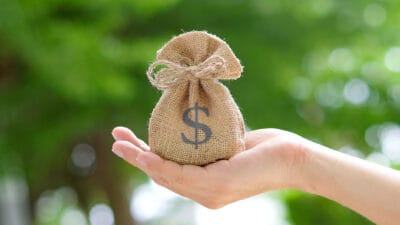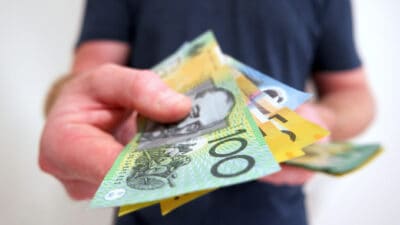Going from zero to a net wealth of $1 million is no mean feat, even if you correctly harness a growing stream of passive income. But you already knew that.
Getting to a $1 million net worth would be a goal that most Australians can aspire to. After all, that would get you pretty close to being able to retire, or at least obtain something close to financial independence. I think using the franked, passive income from ASX shares is one of the best ways that anyone can achieve this goal.
Let's discuss how.
Building a stream of passive income
Building wealth using ASX shares (and the passive dividend income they produce) starts with getting your own house in order.
If one has car loans, personal loans, overdue credit card balances or any other form of non-productive debt, you will need to make sure that these are eliminated first. These debts are actually somebody else's investments, so in order to build your own wealth, you need to stop helping debtors build theirs.
Once you have paid off all non-productive debt, then the next step is to ensure you are living within your means and budget, so you can put surplus capital aside every paycheque. If you've ever heard the phrase 'you have to spend money to make money', this is what it applies to.
I think a great rule of thumb is the 10% rule. This involves immediately putting aside 10% of your regular paycheque aside for investing purposes. The conventional wisdom goes that 'you don't miss money you don't have'. So hopefully after a while, you won't even notice this money leaving your disposable income.
So now you have a pile of cash you can put to good use.
Buying ASX shares and a second income
This is when you can start harnessing the power of compound interest in your favour by investing in passive income-generating ASX shares. Most ASX shares pay out passive income in the form of dividends to their owners. However, I think a great place for most investors with little experience in the share market is an index fund.
An index fund is an investment that allows one to own a huge number of shares, all in one single, neat share.
A popular example is the SPDR S&P/ASX 200 Fund (ASX: STW). This exchange-traded fund (ETF) tracks the largest 200 companies on the Australian share market. That's everything from Commonwealth Bank of Australia (ASX: CBA) and Telstra Group Ltd (ASX: TLS) to Coles Group Ltd (ASX: COL) and JB Hi-Fi Ltd (ASX: JBH).
By using a highly diversified ETF like this one, you can spread your risk across loads of different companies and industries. As such, there is almost a zero chance that you will lose your entire investment – as is possible by investing in a single ASX share.
Because most of the shares in this ETF payout passive dividend income, you essentially get an average of this income in your index fund investment.
At current pricing, this ETF has a trailing dividend yield of 4.61%.
This means that for every $100 you invested in the SPDR ASX 200 ETF a year ago, you would have received approximately $4.61 in passive income over the past 12 months
But what about that $1 million net worth, you might ask?
Well, let's talk about that.
How long will it take to get to $1 million using passive income?
The key to building wealth using passive income is reinvesting it. It will take you a lot longer to get to $1 million if you go out and spend every dividend that drops into your bank account.
Since its inception in 2001, the SPDR ASX 200 Fund has returned an average of 2.94% per annum in capital (share price) growth, and 4.7% per annum in dividend returns. That's as of 30 September, 2023. That combines for a total average return of 7.64% per annum.
Say you start working at age 20 and are able to put aside 10% of your monthly paycheque, resulting in $400 a month ($100 a week) to invest. If you spend every dividend you have, I'm afraid you won't be able to get to $1 million in a single working lifetime.
But if you methodically reinvest all dividends, and are able to consistently invest $400 a month into ASX shares, then you will get to a net worth of $1 million after a little over 37 years, or by the time you turn 57. Together with your super, that will set you up for a very comfortable retirement indeed.
Let's say you stretch your budget and get to a position where you're able to invest $600 a month. That will get you to $1 million after just 33 years.
At this point, you can finally start spending the passive income your ASX share portfolio is generating, and enjoy that (rough) $47,000 in annual spending money.









